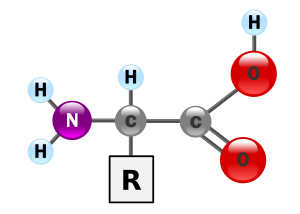Question
In: Biology
DO YOU SEE WHAT EYE SEE CASE STUDY 1 One of Darwin’s main ideas was that...
DO YOU SEE WHAT EYE SEE CASE STUDY
1
One of Darwin’s main ideas was that evolution involves descent with modification from common ancestry. We know today that the modification can be simply divergence in gene sequences. The diagram to the right shows a phylogeny for the organisms represented in the sequences above. The degree of similarity in gene sequences is representative of how long ago two organisms have diverged from each other. In other words, organisms with a more recent common ancestor will have a greater similarity in gene sequences than organisms that have a much more ancient common ancestor. Make a hypothesis for which gene sequences listed above represent each branch of the phylogeny.
2
There is variation in nucleotide sequences, but the amino acid sequences for the partial sequence presented in this case are identical between the five species. Explain why natural selection might have favored conservation of the amino acid sequence.
3
How could different nucleotide sequences result in the same amino acid sequences? Explain the mechanism.
4
How is Pax6 and other master genes like HOX different from other genes? How does this difference affect evolution?
Thank you
Solutions
Expert Solution

The structure of an alpha amino acid in its un-ionized form
Amino acids are organic compounds containing amine (-NH2) and carboxyl (-COOH) functional groups, along with a side chain(R group) specific to each amino acid.[1][2][3] The key elements of an amino acid are carbon (C), hydrogen (H), oxygen (O), and nitrogen (N), although other elements are found in the side chains of certain amino acids. About 500 naturally occurring amino acids are known (though only 20 appear in the genetic code) and can be classified in many ways.[4] They can be classified according to the core structural functional groups' locations as alpha- (?-), beta- (?-), gamma- (?-) or delta- (?-) amino acids; other categories relate to polarity, pH level, and side chain group type (aliphatic, acyclic, aromatic, containing hydroxyl or sulfur, etc.). In the form of proteins, amino acid residues form the second-largest component (water is the largest) of human musclesand other tissues.[5] Beyond their role as residues in proteins, amino acids participate in a number of processes such as neurotransmitter transport and biosynthesis.
In biochemistry, amino acids having both the amine and the carboxylic acid groups attached to the first (alpha-) carbon atom have particular importance. They are known as 2-, alpha-, or ?-amino acids (generic formula H2NCHRCOOH in most cases,[6]where R is an organic substituent known as a "side chain");[7] often the term "amino acid" is used to refer specifically to these. They include the 22 proteinogenic ("protein-building") amino acids,[8][9][10] which combine into peptide chains ("polypeptides") to form the building-blocks of a vast array of proteins.[11] These are all L-stereoisomers ("left-handed" isomers), although a few D-amino acids ("right-handed") occur in bacterial envelopes, as a neuromodulator (D-serine), and in some antibiotics.[12]
Related Solutions
What do you see as the main organizational problems that are likely to be associated with...
1. What Would You Do? What would you not do? Case Study: Alex Jacoby is 18...
Influenza Case Study 1. What are the main symptoms of influenza? 2. Would you expect a...
Developmental Psychology Reflect on the following case: 1. What do you see as the major problems...
a) What type of research study could you do in order to see whether or not...
How do you see ideas of the Enlightenment evident in our society today? Be sure to...
You and a co-worker rarely see eye to eye. Tomorrow, your co-worker will yell at you...
Please answer the following Case analysis questions 1-What do you see that is impressive about New...
One of the main concepts you will see repeated in this course is: form allows for...
What are the main parts of the eye? What are the eye's connections to the brain?
- This passge below require analsyis and breakdown A decision tree is a decision support tool that...
- chemistry please I need report for lap experiment : 1- testing salt for cations 2- testing...
- Complete the following dihybrid crosses. Draw out the Punnett for the F1 generation and the F2...
- 1) At 25
- ArrayStack: package stacks; public class ArrayStack<E> implements Stack<E> { public static final int CAPACITY =...
- Please look at the use of commercials and the use of commercials to advertise to children....
- Consider the titration of a 20.0mL sample of 0.105M HC2H3O2 with 0.125M NaOH. Determine each of...
 gladiator answered 2 years ago
gladiator answered 2 years ago